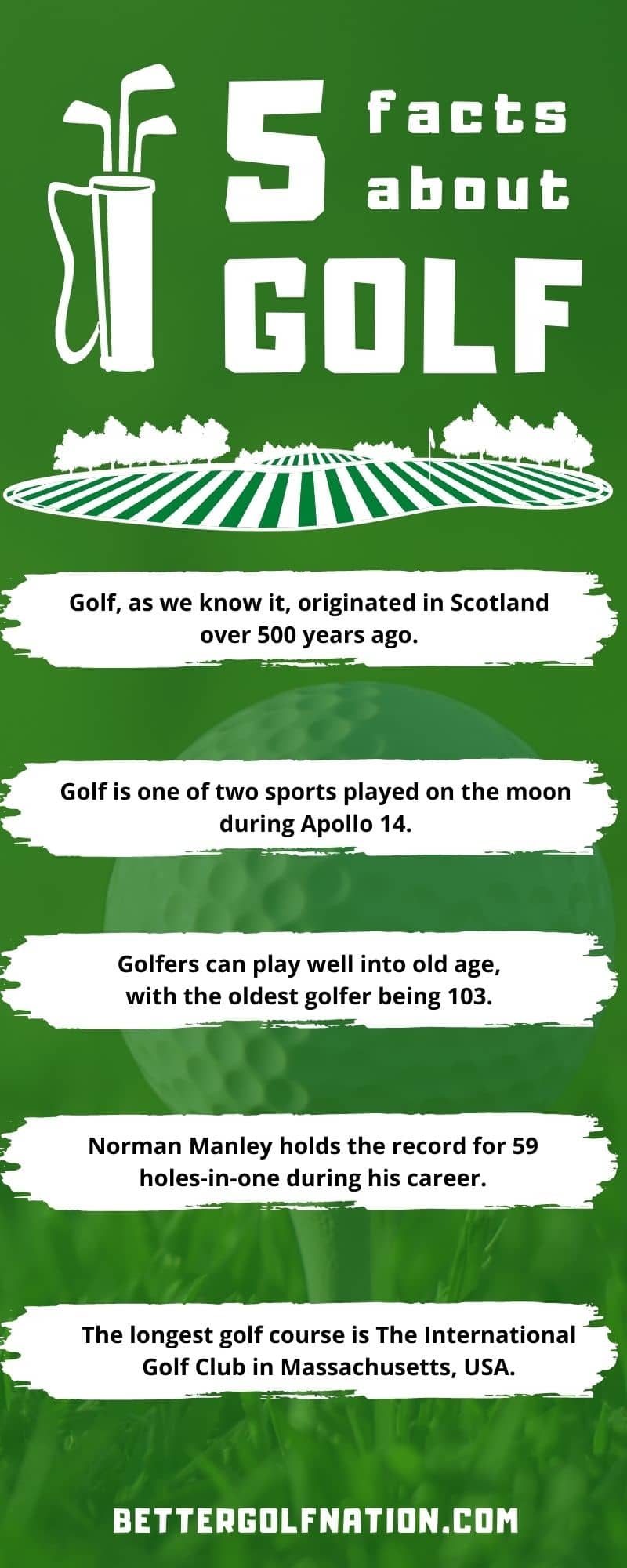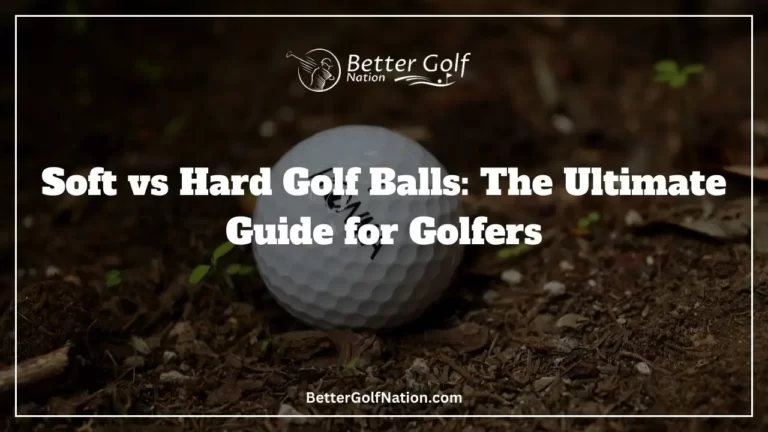Rust No More – How to Get Rust Off Golf Clubs Like a Pro!
- Last updated on November 25, 2023
- Toni Benedito
- Golf Equipment & Gear, Blog
Prevent rust on your golf clubs by keeping them clean and dry after each game. Wipe them down with a dry towel, and for stubborn rust, try using cola or a mixture of water and soap. Regularly inspect and clean your clubs, invest in protective covers, and use rust removal tools like abrasive pads or white vinegar. With proper care, your golf clubs will stay in top-notch condition, ensuring a great game every time!

Key Takeaways
- Regularly wipe down your golf clubs with a dry towel after each game to prevent rust formation, maintaining their longevity and performance on the course.
- Employ effective cleaning solutions like cola, water-soap mix, white vinegar, or lemon juice to tackle rust stains, ensuring your clubs stay in top-notch condition.
- Invest in essential tools such as abrasive pads, steel wool, and rust remover to efficiently remove rust and protect your golf clubs for prolonged use.
- Address pitting corrosion promptly using vinegar, lemon juice, and proper cleaning techniques, emphasizing the importance of regular maintenance for optimal club performance.
- Prioritize grip maintenance by keeping them dry and employing DIY solutions like vinegar or lemon juice, while storing clubs in a cool, dry place to extend their overall lifespan.
Introduction
If you’re a keen golfer, you know how important it is to take care of your golf clubs. Not only do they cost a significant amount of money, but they also play a crucial role in your game.
Golf club maintenance is an essential part of being a golfer, and one aspect you shouldn’t ignore is rust control. Rust can build up on your clubs over time, causing damage and affecting their performance.
Rust stains on golf clubs are not only unsightly but can also lead to pitting corrosion. Pitting corrosion occurs when the rust eats away at the metal’s surface, creating small holes that weaken the club’s structure.
Fortunately, there are simple steps you can take to prevent rust formation and remove existing rust stains. One of the best ways to prevent rust formation is by keeping your clubs clean and dry at all times.
It’s crucial to avoid leaving them wet or in damp places as moisture creates the perfect environment for rust to form. After every game, make sure to wipe down your clubs with a dry towel or cloth.
To clean existing rust stains off your golf clubs, start by mixing water and soap in a container. Dip an abrasive pad into this water and soap mixture before scrubbing it onto the affected areas gently.
For stubborn stains that don’t come off quickly with this cleansing solution, try using a metal scrubber instead. Did you know that carbonated drinks like Coca-Cola have been known for their stain-cleaning abilities?
Enjoying this article? Read more:
Check out this video below from GolfLink‘s YouTube channel on removing rust from golf clubs:
Yes! You heard right!
Cola can be used as an effective rust cleaner due to its highly acidic content. Simply pour some cola onto an old rag or cloth before rubbing it onto rusty areas for several minutes until the stain lightens.
While cleaning club surfaces may remove outer layer rust stains temporarily from golf clubs, preventing them from reappearing will require proper care and regular maintenance over time that includes applying metal protectors or other coatings designed specifically for golf equipment. It’s also essential to store your clubs in a dry place.
With these rust-cleaning tips and proper golf club maintenance, you can keep your clubs looking clean and new while ensuring their longevity. Remember to clean and dry your clubs after every use, prevent moisture buildup, apply rust protection agents regularly, and use Cola as a quick-fix solution for stubborn rust stains.
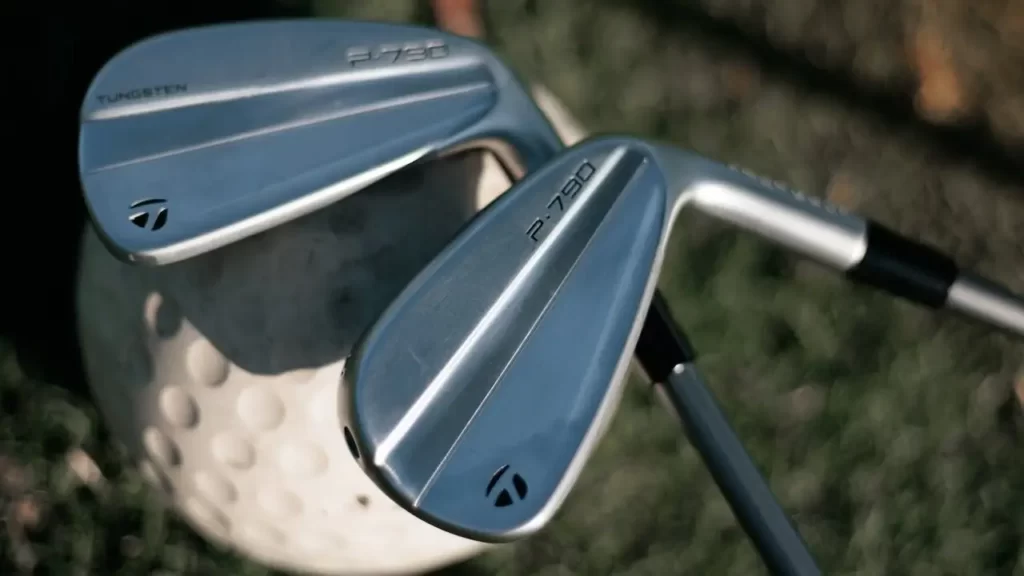
Understanding Rust on Golf Clubs
When it comes to golf clubs, rust is one of the most common problems that many golfers face. Despite being made of high-quality metal, golf clubs are not immune to rust formation.
Rust is a form of corrosion that occurs when iron or steel comes into contact with moisture and oxygen. Golf clubs are exposed to these elements on a regular basis, making them vulnerable to rust formation.
Understanding the nature of rust on golf clubs is necessary for effective rust treatment and prevention. Rust forms when iron or steel oxidizes in the presence of oxygen and water.
This reaction causes the outer layer of the metal to corrode, forming reddish-brown flakes known as rust. The presence of acid or salt makes it worse by accelerating the corrosion process.
Rust can start with just a small scratch or nick on the surface of your club, which quickly becomes an invitation for moisture and oxygen to get through. Rust buildup on your golf club can cause serious damage over time if left untreated.
The longer you leave it unattended, the more difficult it becomes to remove it using basic cleaning methods such as wiping it with a cleaning sponge or removing it with regular soap cleaning agents. If you don’t address this issue promptly, you may have no other option but to replace your expensive club altogether.
To prevent rust from forming in the first place, proper club care is necessary. Always dry your clubs thoroughly after use and store them in a dry place away from moisture and humidity.
Try using an oxidation remover solution like acetic acid mixed with water in a spray bottle before storing them away. Understanding how rust forms on your golf clubs can help you take proactive measures towards avoiding its occurrence in order to extend their longevity for years to come!
Enjoying this article? Read more:
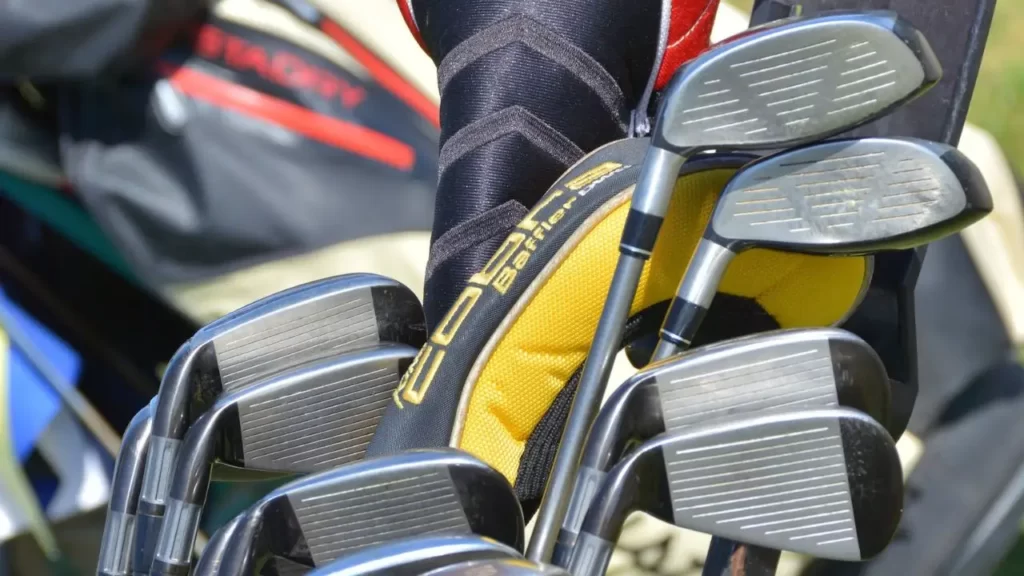
Preventing Rust Formation
Ensuring the longevity of your golf clubs and preventing the bothersome issue of rust formation is a crucial aspect of equipment care. By implementing effective preventive measures, you can significantly reduce the risk of rust-related headaches and expenses. Let’s delve into key strategies for maintaining pristine golf clubs.
Moisture Avoidance: To safeguard your golf clubs from rust, it’s essential to keep them dry. Avoid leaving them exposed to open air or moisture for extended periods. By minimizing exposure to these elements, you create a protective barrier against rust formation.
Post-Game Routine: After a round of golf, establish a meticulous post-game routine. Utilize a soft cotton towel to thoroughly wipe down your clubs, focusing on eliminating any lingering moisture. Once dry, store your clubs indoors to prevent prolonged exposure to environmental factors that could accelerate rusting.
Protective Covers: Enhance the longevity of your clubs by investing in protective covers. These specialized head covers serve as a shield, safeguarding club heads from potential scratches, dings, and the ever-present threat of rust formation. This proactive measure adds an extra layer of defense against environmental wear and tear.
Regular Cleaning: Integrate regular cleaning into your maintenance routine as a preventive measure against rust. Eliminate accumulated dirt and contaminants, known contributors to rust over time. By maintaining a consistent cleaning schedule, you actively mitigate the factors that promote corrosion, preserving your club’s condition.
Mild Soap Solution: When addressing surface-level dirt or grime on metal surfaces, opt for a gentle yet effective solution. A mild soap solution mixed with warm water provides an efficient and safe method for cleaning. This approach ensures that your clubs remain free from contaminants without causing damage, contributing to long-term rust prevention.
Quality Cleaning Supplies: Bolster your rust prevention strategy by investing in top-tier cleaning supplies explicitly designed for rust and stain removal. Having high-quality products readily available ensures a swift response when signs of oxidation appear on your clubheads. This proactive approach guarantees effective maintenance, keeping your clubs in optimal condition for extended periods.
Embracing these preventive measures not only maintains your golf club’s cleanliness and condition during storage and play but also acts as a proactive defense against future corrosion issues. By prioritizing the care of your golf equipment, you can enjoy the sport without the constant worry of expensive damages caused by rusty equipment. Take the necessary steps to preserve your golf clubs and enhance your overall golfing experience.
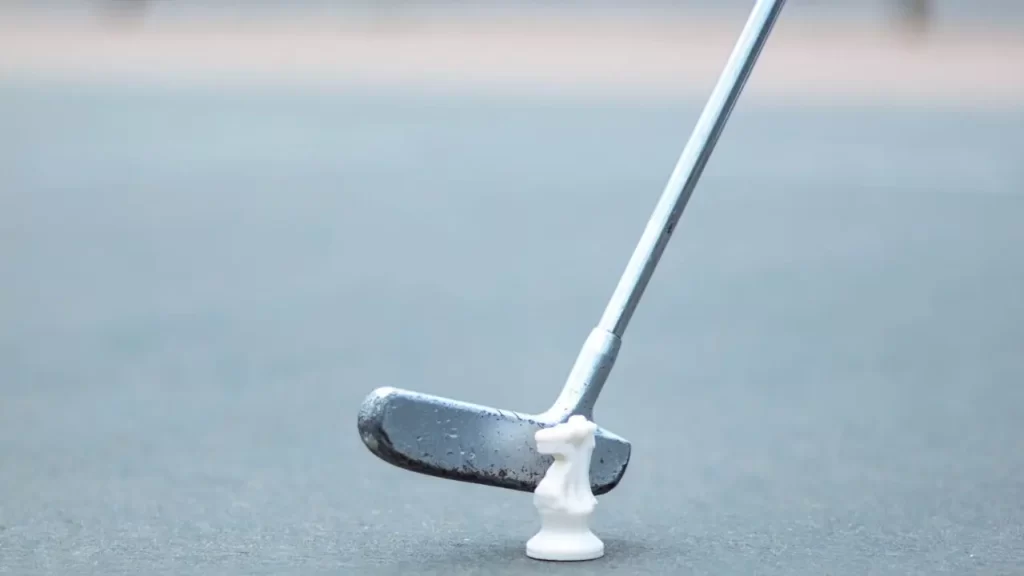
Methods to Remove Rust from Golf Clubs
Discovering rust on your golf clubs doesn’t have to be a cause for concern. Fortunately, several effective methods exist to restore them to their original shine and prevent future rust formation. Whether you’re dealing with superficial stains or more advanced rust issues, these techniques ensure your golf gear remains in top-notch condition.
Abrasive Pad or Rust Scraper
Recommended for superficial rust stains, use a sponge or abrasive pad with a soap-water mixture to gently scrub off the stain. Exercise caution to avoid scratching the club’s surface.
Here are the steps to follow to use this method:
- Step 1: Identify superficial rust stains on your golf clubs.
- Step 2: Create a soap-water mixture.
- Step 3: Use a sponge or abrasive pad to gently apply the mixture, carefully scrubbing off the stain.
- Step 4: Exercise caution to avoid scratching the club’s surface during the process.
White Vinegar Method
Soak the club in white vinegar for at least 30 minutes or overnight if needed. Afterward, scrub with an abrasive pad, rinse thoroughly with water, and dry with a soft cloth.
Here are the steps to follow to use this method:
- Step 1: Submerge the affected golf club in white vinegar for a minimum of 30 minutes or leave it overnight for stubborn rust.
- Step 2: Retrieve the club and use an abrasive pad to scrub away loosened rust.
- Step 3: Rinse the club thoroughly with water.
- Step 4: Dry the club completely with a soft cloth to prevent further moisture-related issues.
Lemon Juice Scrubbing
Effective for light stains, cut a lemon in half and rub it over the affected area until discoloration disappears. Rinse with water and dry the club completely.
Here are the steps to follow to use this method:
- Step 1: Cut a lemon in half to prepare for scrubbing.
- Step 2: Rub the lemon over the affected area until discoloration disappears.
- Step 3: Rinse the club with water to remove any residual lemon juice.
- Step 4: Ensure the club is thoroughly dried to prevent moisture-related damage.
Rust Neutralizer or Corrosion Treatment
An advanced technique involving a chemical reaction with iron oxide (rust) to convert it into stable compounds, preventing further corrosion on your golf gear.
Here are the steps to follow to use this method:
- Step 1: Identify advanced rust issues on your golf gear.
- Step 2: Acquire a rust neutralizer or corrosion treatment solution.
- Step 3: Apply the solution, ensuring it chemically reacts with iron oxide (rust).
- Step 4: Allow time for the reaction to convert rust into stable compounds, preventing further corrosion on your golf gear.
While prevention is key for maintaining your club’s longevity and preventing stains, these methods offer a reliable solution if rust does appear on your used golf clubs. By implementing these approaches, you can easily remove rust and restore your clubs to a sparkling clean condition, ensuring a prolonged lifespan for your valuable golf equipment.
Enjoying this article? Read more:
Check out this video below from ELITE FIT GOLF / Mobile Clubmaker‘s YouTube channel on restoring chrome on golf clubs:
Tools for Rust Removal
When it comes to removing rust from golf clubs, having the right tools is crucial. Here are some essential tools you’ll need for rust removal:
First, you’ll need a cleaning solution. There are several options available, including specialized rust remover products and DIY solutions such as baking soda and vinegar or carbonated drinks like Coca-Cola or Sprite. Whichever method you choose, be sure to use the appropriate protective gear (gloves and goggles) and follow any safety precautions listed on the product label.
Next, consider using an abrasive pad or steel wool to scrub away surface rust on your golf clubs. Be careful not to use too much force when scrubbing, as this can damage your club’s finish or grooves. For tougher stains and corrosion, there are specialized rust removal methods like electrolysis or chemical treatments that can be effective but should only be attempted by experienced users.
"When it comes to removing rust from golf clubs, having the right tools is crucial. Whichever method you choose, use appropriate protective gear and follow safety precautions. Whether it's a specialized product or something from your pantry, choose a cleaning solution that works best for you. Always protect your gear with topical products like metal protector sprays or lubricants after finishing up."
Another useful tool for club care is a cleaning sponge. These sponges are gentle enough to use on metal surfaces without causing scratches or other damage while still effectively removing dirt and grime.
Some cleaning sponges even come with an attached handle for easier maneuverability. After you’ve successfully removed all traces of rust from your golf clubs, it’s a good idea to apply a metal protector and/or lubricant spray to prevent future staining and corrosion.
This step will help extend the lifespan of your golf gear while keeping it looking its best. Having the right tools on hand can make all the difference when it comes to removing rust from your golf clubs.
Be sure to choose a cleaning solution that works best for you (whether that’s a specialized product or something from your pantry), use gentle but effective abrasives like steel wool or cleaning sponges as needed, and consider using advanced rust removal methods if needed in severe cases of corrosion. Always protect your gear with topical products like metal protector sprays or lubricants after finishing up.
By following these 7 steps and maintaining a regular regimen of club care and stain prevention, you’ll be able to keep your golf clubs looking and performing at their best for years to come.
Enjoying this article? Read more:

Understanding and Dealing with Pitting Corrosion
Pitting corrosion is a serious form of rust that can affect golf clubs, particularly golf wedges. This type of corrosion forms small pits on the surface of the metal, which can lead to serious damage over time.
is essential for maintaining your golf clubs in excellent condition. One way to prevent pitting corrosion from forming on your golf clubs is to clean them regularly using mild detergent and water.
Be sure to rinse the clubs thoroughly after cleaning them, since any lingering soap residue could actually contribute to the formation of rust. If you notice pitting corrosion on your rusty golf clubs, it’s important not to panic.
There are various methods you can use for rust management and pitting corrosion removal. One popular approach involves using a combination of vinegar and lemon juice as a natural rust remover.
To remove pitting corrosion from your golf club, start by applying the vinegar mixture directly to the affected area with a soft cloth or brush. Allow it to sit for several minutes before scrubbing the area gently with a metal rust cleaner or natural rust remover like lemon juice and scrubbing away any remaining debris with soap and water.
Prevention is key when it comes to dealing with pitting corrosion on your golf clubs. Regularly cleaning your clubs after each game or practice session can help prevent rust from forming in the first place.
Additionally, you may want to consider investing in protective covers for your clubs during storage or transportation. By taking proactive steps like these, you can keep your golf clubs looking great and performing at their best for years to come!

Enjoying this article? Read more:
Check out this video below from Brad Meehan‘s YouTube channel on how to clean and restore golf shafts:
Restoring Golf Club Grooves
The condition of the grooves on your golf clubs is crucial to playing a good game. Grooves are what give you the ability to control your ball flight and spin, and they help you get out of tough lies.
Over time, rust can build up in these grooves, particularly if you play frequently in wet conditions or store your clubs improperly. Fortunately, restoring golf club grooves is a relatively easy process that can be done at home with a few tools.
One method for restoring golf club grooves is to use steel wool or sandpaper. Start by cleaning the clubhead with soap and water or another acidic cleaning solution to remove any dirt or debris that may have accumulated on the surface. Once the club head is clean, use fine-grained steel wool or sandpaper to carefully rub away any rust buildup from each groove. Be sure to work in one direction only so as not to damage the grooves.
Another popular method for restoring golf club grooves involves using a natural rust remover such as vinegar and lemon juice or even cola soaking. Simply immerse the clubhead in your chosen solution overnight, and then scrub away any remaining rust with a soft-bristled brush or toothbrush.
If these DIY methods don’t do enough for you, there are also commercially available rust removal and metal protector products specifically designed for golf gear. You can choose from specialized cleaners that remove rust buildup and stains while leaving behind a protective film to prevent future corrosion.
Restoring your golf club’s grooves will not only help improve your game by increasing spin but also extend their longevity by preventing further damage caused by rust buildup over time. Remember, taking care of your golf clubs should be an ongoing process, not just something you do when they start showing signs of wear and tear.
Enjoying this article? Read more:
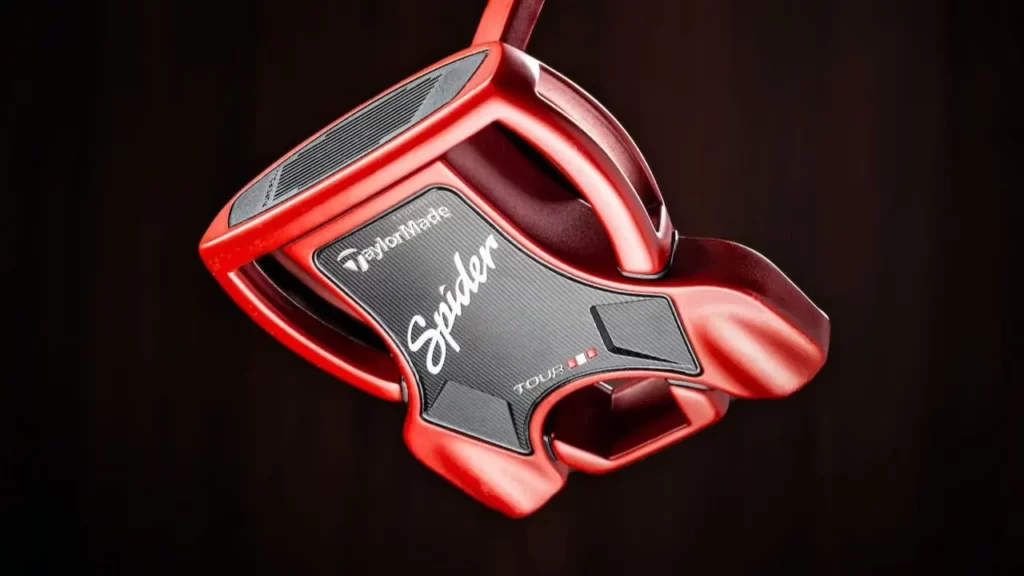
Refinishing and Protecting Your Golf Clubs
Now that you have successfully removed the rust from your golf clubs, it’s time to focus on refinishing and protecting them. This is an essential step in ensuring that your clubs remain in excellent condition for a long time.
Here are some tips to help you get started: First and foremost, make sure to dry your clubs thoroughly after cleaning them. Any moisture left behind can cause further corrosion, undoing all your hard work. Once they are dry, apply a rust protection solution or corrosion treatment to prevent future rust formation.
To refinish the clubheads of the golf irons or putters, start by using a metal scrubber or gentle cleaning agent to remove any remaining surface rust or other dirt. You can also use Coca-Cola as an effective cola rust remover. Soak the clubheads in white vinegar overnight if there is any stubborn rust left.
Next, use a lubricant spray on the surface of the clubhead and gently buff it with a soft cloth for extra shine. This will also protect against future corrosion by adding a layer of rust neutralizer. For golf gear care, you can also consider refinishing your club shafts by sanding them down with fine-grit sandpaper to remove any scratches or blemishes.
Afterward, coat them with a protective sealant to keep them looking new. When maintaining golf club grips after removing rust from rusty clubs, apply soap and water to cleanse off any dirt and grime that may have accumulated over time.
Use alcohol wipes for added cleanliness before applying grip-enhancing solutions like talcum powder or grip tape. When it comes to maintaining your golf gear and removing pesky rust buildup on your clubs, taking steps like these will ensure they stay in top-notch condition for years to come!
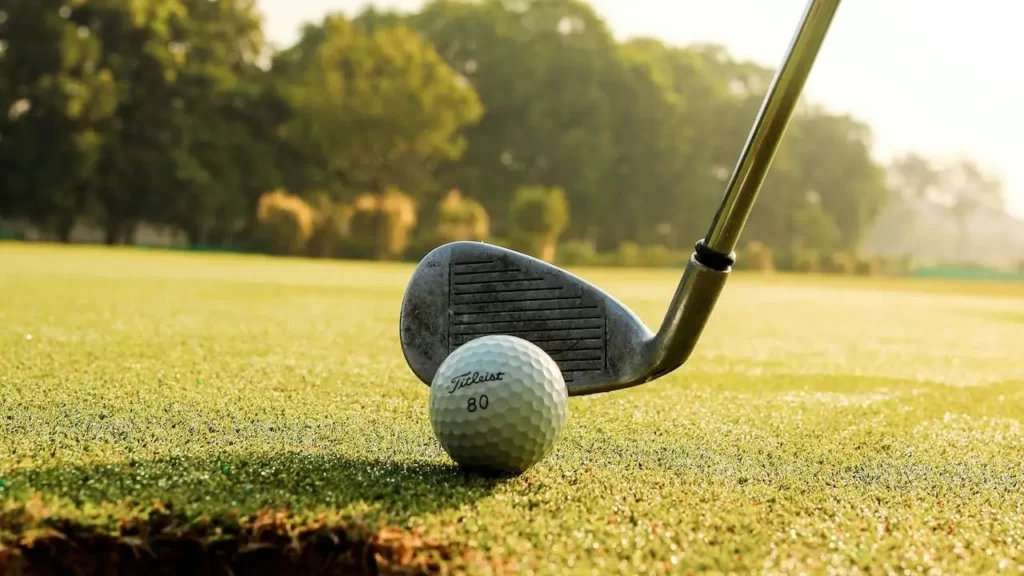
Maintaining Golf Club Grips
The grip of your golf club is an essential component that plays a significant role in achieving the perfect shot.
To maintain the grip’s longevity, it is crucial to keep it clean and dry. Moisture can lead to the formation of rust on the metal underlay of your grips, which can be challenging to remove and shorten their lifespan.
To prevent rust formation on your grip, you should avoid leaving them wet for extended periods after playing a round of golf. Wipe down your clubs after use with a dry towel or cloth to remove any moisture and dirt that has accumulated on them. This simple step will go a long way in ensuring that they remain in pristine condition.
Another way to keep your grips free from rust is by regularly cleaning them. There are several DIY solutions available for cleaning golf club grips, such as using vinegar or lemon juice mixed with warm water. Dip a soft cloth into the solution and wipe down each grip thoroughly, paying special attention to any grooves or patterns on the surface.
If you want to ensure that your clubs remain in excellent condition for years to come, it’s essential to keep up with regular equipment upkeep. After cleaning your clubs thoroughly, store them in a cool, dry place away from direct sunlight and moisture until they’re ready for use again.
There are several proven methods for maintaining golf club grips’ longevity while preventing rust formation, including regular cleaning and avoiding prolonged exposure to moisture or extreme temperatures. By taking these steps to care for your equipment properly, you’ll not only extend its lifespan but also ensure that you’re always performing at your best out on the golf course!
Check out this video below from The Backyard Golfer‘s YouTube channel on how to remove rust:
Enjoying this article? Read more:

Conclusion
Golf clubs are an important investment for any golfer, and they require proper care and maintenance to ensure they last a long time.
While rust on golf clubs may seem like a daunting problem, it can be easily remedied with the right rust removal techniques and tools. By following the 7 steps outlined in this article, you can successfully remove rust from your golf clubs and restore them to their former glory.
Remember that prevention is key when it comes to rust formation on your golf clubs. Regularly inspect your equipment for signs of corrosion or damage and clean it after every use.
You can also protect your clubs by applying a rust protection spray or coating. The methods listed in this article are just a few ways to remove rust from your golf clubs.
There are many other DIY techniques out there, such as using vinegar or Coca-Cola as a gentle cleaning agent or using a rust scraper for outer layer rust. However, always exercise caution when trying any new technique that could potentially damage your equipment.
Maintaining the grips on your golf clubs is just as important as removing rust from them. Keep them clean with a gentle cleaning agent and replace them when necessary to prevent slipping during swings.
Overall, taking good care of your golf equipment is essential for optimal performance on the course. With these tips for equipment upkeep, you can spend more time perfecting your swing and less time worrying about rusty clubheads!
Share this Post
Toni Benedito
Keep Reading
Follow Us
Recent Posts

How Do Pro Golfers Get Paid? The Business of Golf
Professional golfers get paid both before and after tournaments. Before a tournament, they receive appearance fees, sometimes exceeding $1 million, to attract top players. After the tournament, earnings depend on their placement, with the PGA

How Much Do Golf Players And Pros Make? You Won’t Believe It!
Professional golfers earn substantial incomes through tournament winnings, sponsorship deals, and endorsements. Top players on the PGA Tour can make millions annually, with significant earnings from prize money and lucrative brand partnerships. For example, Rory

The Shocking Cost: How Much Does It Cost to Fly with Golf Clubs?
Flying with golf clubs can be a hassle, but it’s worth it for avid golfers. Costs vary by airline, ranging from $30 to $150 per way. Southwest Airlines offers a generous policy, allowing one set

Why Do Golfers Tape Their Fingers Before Hitting the Course?
Golfers tape their fingers to prevent injuries from repetitive motions, provide support for existing injuries, and improve grip comfort. It’s a popular technique among amateurs and pros alike, offering a lightweight and effective solution compared

How Much Does a Round of Golf Cost? Are You on Par?
The cost of a round of golf varies widely based on factors like course type, location, and time of play. Public courses typically range from $30-$100 per round, while exclusive ones like Augusta National or

Hidden Fees: How Much Does It Cost To Rent a Golf Cart
Wondering how much it costs to rent a golf cart? Explore factors like location, rental duration, and cart type impacting prices. Daily rates range from $50 to $80, while weekly rentals can vary from $200
Table of Contents
